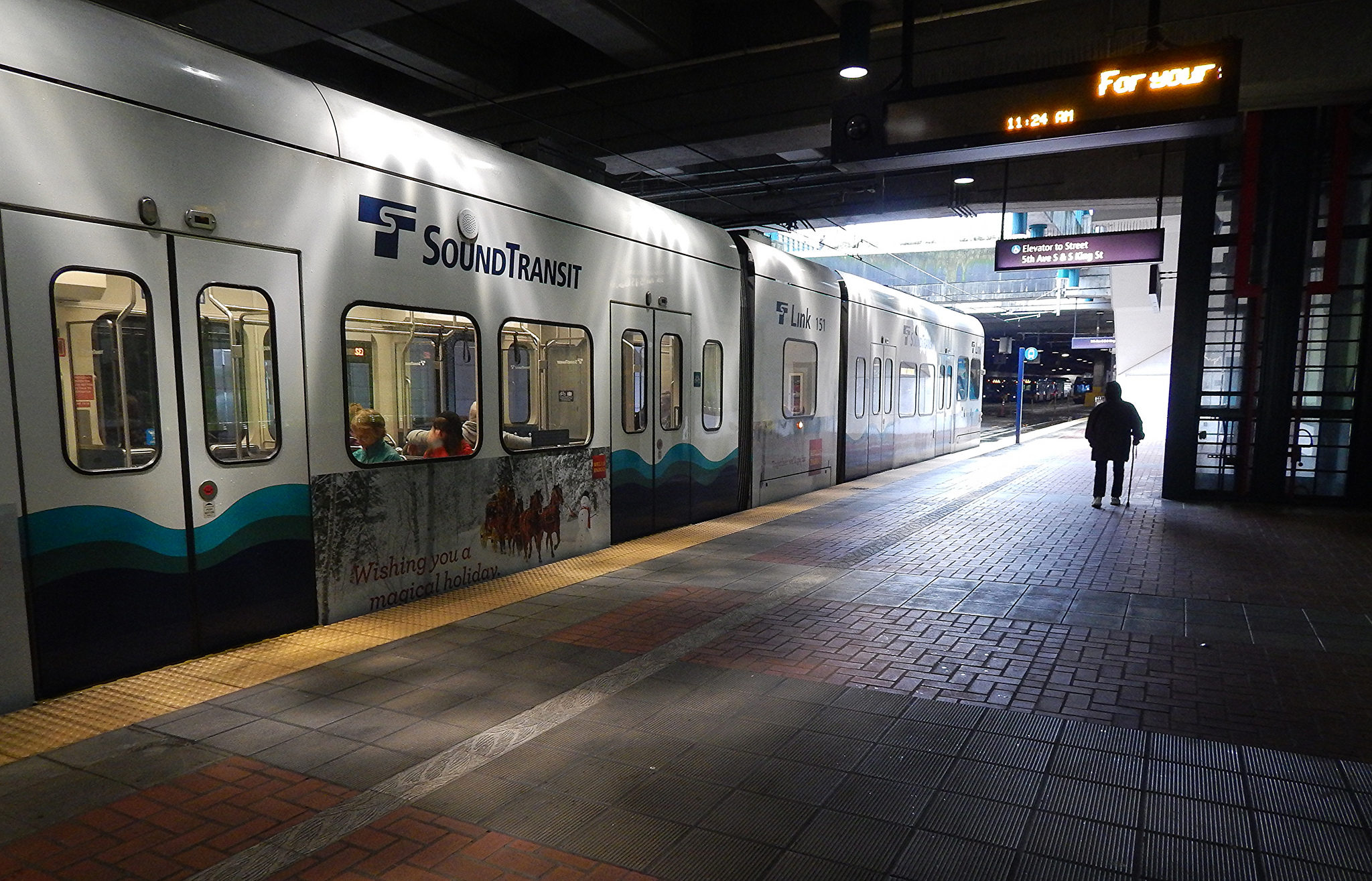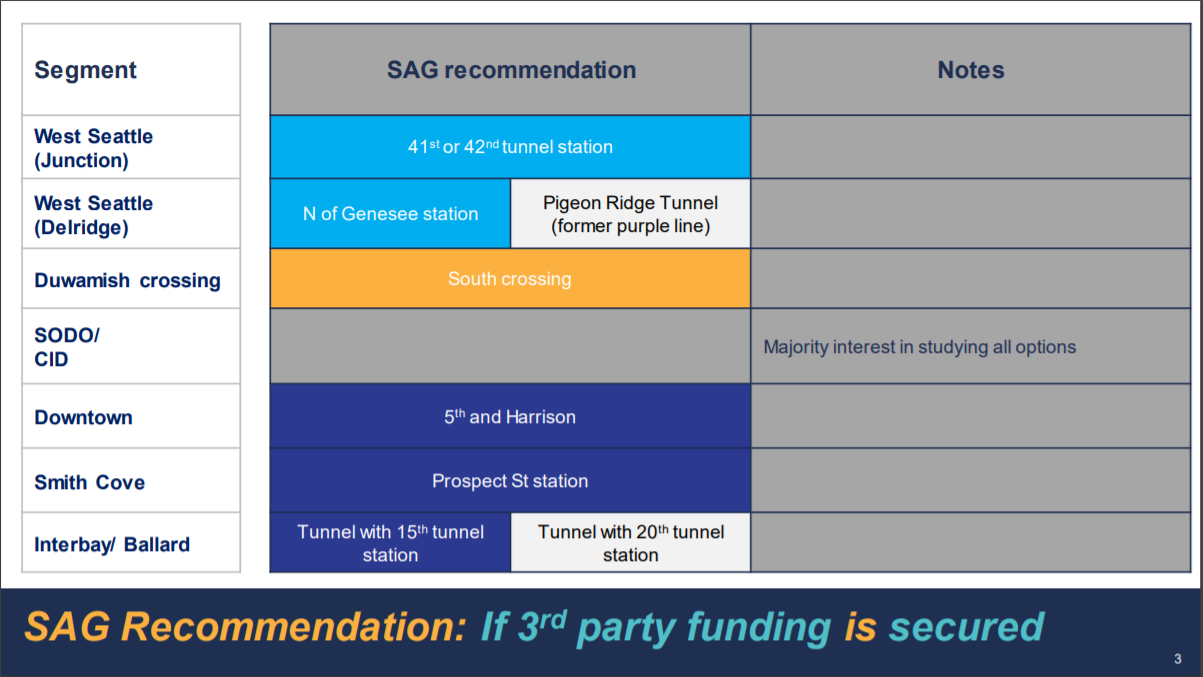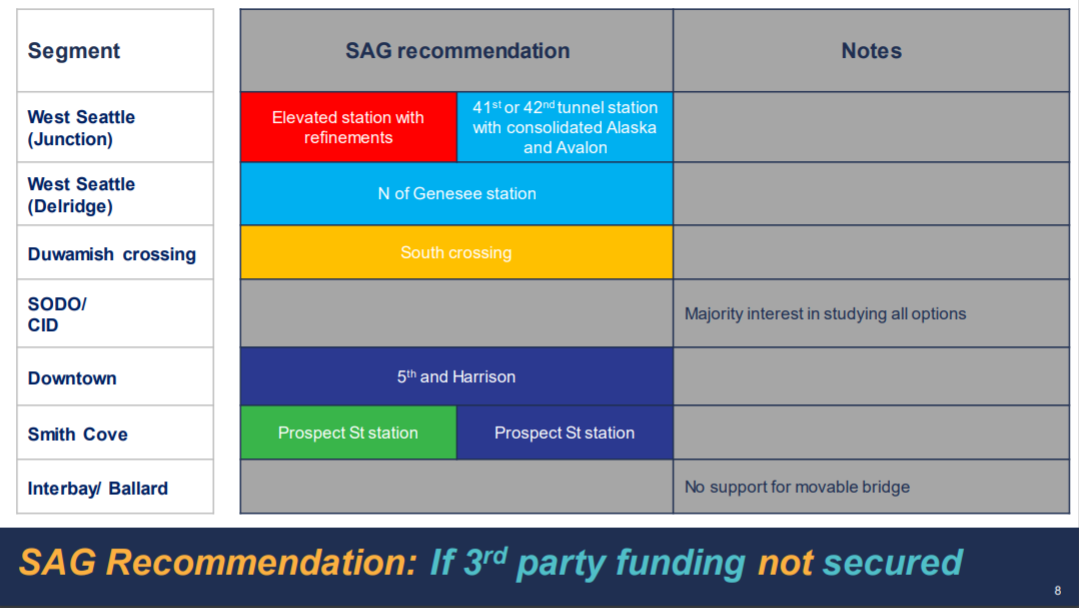
The process to decide where future light rail stations are placed on the West Seattle Ballard Link Extension is underway. This critical decision-making process will determine how people get around the Puget Sound region for generations.
Phase one coming to a close
More than a year and a half ago, Sound Transit embarked on a process they hoped would eventually shave time off its West Seattle and Ballard Link Extension (WSBLE) project delivery schedule. The WSBLE expansion will add five new light rail stations between West Seattle and downtown Seattle, and nine stations between the Chinatown-International District (CID) and Ballard. The goal of this engagement process was to gain stakeholder and board agreement on a “preferred alternative,” including route and station locations, prior to doing its lengthy environmental work. The idea was that building consensus around a pre-selected preferred alternative could save time, and potentially long and costly legal battles.
To do this, Sound Transit created its most in-depth engagement process since the agency came into existence. They set up a Stakeholder Advisory Group (SAG) of neighborhood, transportation and land use organizations (TCC was among them). All recommendations made by the SAG were then brought to an Elected Leadership Group (ELG) for a round of screening prior to final decisions from the Sound Transit Board.
In addition, Sound Transit worked with the City of Seattle to use its Racial Equity Toolkit (RET) as part of project and engagement development. The RET directed Sound Transit to put additional resources into engaging with the CID and Delridge neighborhoods. As a result, the ELG hosted a special meeting focused on these two station areas; to provide in-language translation at this meeting; and to host in-language, in-community meetings to reach more neighbors for input. The RET also provided advocates, electeds and other stakeholders a guidepost for discussions about the station and route alternatives that were based in a racial equity framework.
Did this lengthy process produce good results?
The SAG met for the last time on Wednesday, April 17, to make its final recommendations on routes and station locations. Although Sound Transit urged the group to select two preferred alternatives – one if third party funding was secured, and one if it wasn’t – there was concern among the group that despite the work of the last year, it is too early in the design and engineering process to make any tough decisions.
As TCC stated during the SAG meeting, selecting an alternative prior to the environmental work was always an aspirational goal. While the SAG had general agreement around some routes and stations, there were more questions than answers in some neighborhoods, including the CID.
Ultimately, the SAG’s recommendations were not as clear as ST hoped they would have been. This was an experimental process that produced mixed results, but because of the Racial Equity Toolkit, the process did raise racial equity concerns and engagement to the forefront in a way ST planning processes have not in the past. This is a step in the right direction and we are continuing to help shape how communities engage with major transit investment projects.
Up next: Environmental work + Tacoma extension
The Elected Leadership Group met on April 26 and recommended to study all alignments in the Environmental Impact Study (EIS). ELG as well as SAG wanted to gain a deeper understanding of each option, especially in the Chinatown International District where there has been historic disinvestment and institutionalized racism. The full Sound Transit Board will meet this Thursday, May 23 at 1:30 pm to make a final decision about which routes and station locations will be studied in the EIS.
TCC and our Transit Access Stakeholders coalition submitted a scoping letter to ensure all manner of transit access, transit integration, transit-oriented development and short- and long-term displacement are thoroughly studied.
The Tacoma Dome Link Extension (TDLE) process, which is mirroring the West Seattle and Ballard Link Extension process, is also marching along. The TDLE SAG and ELGs are considering various alternatives for four new stations and alignments. TCC has also submitted scoping comments for the TDLE EIS.
Stakeholder Advisory Group recommendations for West Seattle Ballard Link Extension






